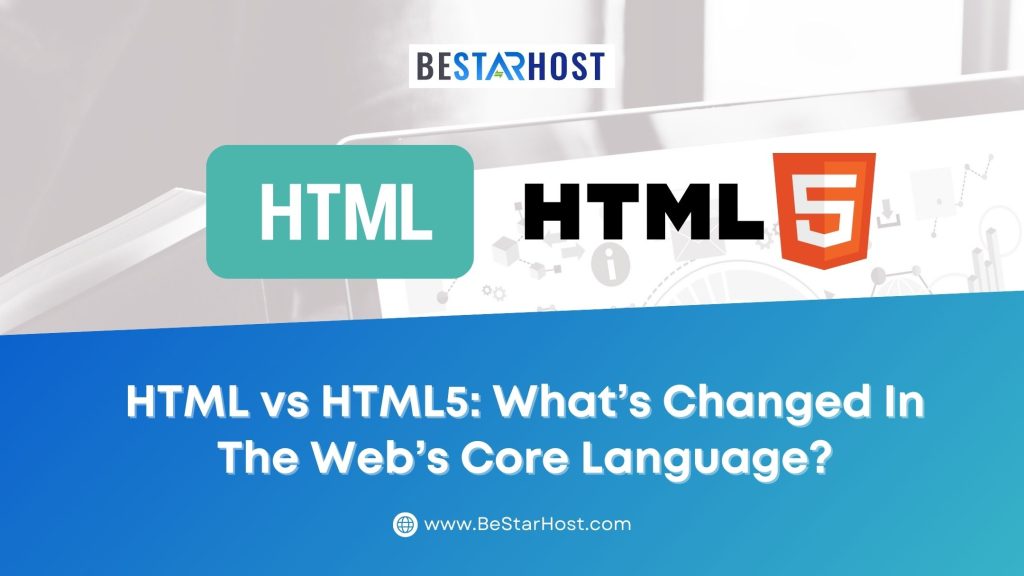
HTML (HyperText Markup Language) has been the foundation of web development since the early days of the internet. Over the years, it has evolved significantly, with HTML5 being the latest and most advanced version. In this blog post, lets deal with HTML vs HTML5: What’s Changed in the Web’s Core Language ? we’ll break down the difference between HTML and HTML5, explore HTML5 improvements over HTML, and provide an HTML vs HTML5 comparison that highlights the key upgrades and new features.
What is HTML?
HTML is the standard markup language used to create web pages. It structures web content by defining elements like headings, paragraphs, links, images, and lists. Early versions of HTML focused purely on content structure, relying heavily on external technologies like Flash or JavaScript for multimedia or dynamic content.
What is HTML5?
HTML5 is the fifth major revision of HTML and was officially introduced in 2014. It was developed to address the needs of modern web applications, enabling better handling of multimedia, offline capabilities, and more semantic content. HTML5 provides a cleaner, more efficient, and user-friendly coding experience.
Key Differences Between HTML and HTML5
Let’s take a closer look at the HTML vs HTML5 comparison across various aspects:
| Feature | HTML | HTML5 |
|---|---|---|
| Doctype Declaration | Lengthy and complex | Simple: <!DOCTYPE html> |
| Multimedia Support | Requires plugins (e.g., Flash) | Native <audio> and <video> elements |
| New Elements | Limited semantic elements | Semantic tags like <header>, <footer> |
| Form Enhancements | Basic input types | New input types like email, date, etc. |
| Graphics & Animation | Not supported natively | Native <canvas> and SVG support |
| Offline Capabilities | Not available | Uses local storage and cache APIs |
| Mobile Optimization | Not built-in | Designed with mobile-first in mind |
HTML5 Features vs HTML
One of the biggest shifts in HTML5 features vs HTML is the enhanced support for rich media and interactivity without relying on external plugins. Here are some notable features of HTML5:
1. Multimedia Integration
HTML5 introduced native support for audio and video through <audio> and <video> tags, making media playback smoother and more accessible.
2. Semantic Elements
Tags like <article>, <section>, <nav>, and <aside> give structure and meaning to content, improving SEO and accessibility.
3. Form Input Types
HTML5 enhanced forms with input types like tel, url, range, and more, reducing the need for custom JavaScript validation.
4. Offline Web Applications
HTML5 introduced APIs like Web Storage (localStorage and sessionStorage) and Application Cache (now deprecated in favor of Service Workers), enabling offline functionality.
5. Enhanced Graphics and Visuals
The <canvas> element and scalable vector graphics (SVG) provide advanced options for rendering graphics, animations, and even games directly in the browser.
Why HTML5 Matters Today
The transition from HTML to HTML5 was driven by the need for a faster, more secure, and more interactive web. With the rise of mobile browsing, responsive design, and multimedia-rich content, HTML5 has become essential for modern web development.
Some HTML5 improvements over HTML include:
-
Improved user experience on mobile devices
-
Enhanced SEO through semantic tags
-
Better accessibility for users with disabilities
Understanding the difference between HTML and HTML5 is crucial for anyone involved in web development. HTML5 is not just an upgrade—it’s a complete overhaul that aligns the web with the demands of today’s users and devices. Whether you’re building a simple website or a complex web application, embracing HTML5’s features and improvements can significantly boost your site’s functionality and user experience.
Want to future-proof your website? Make sure you’re using HTML5 standards and enjoy the benefits of modern, fast, and user-friendly web pages.
